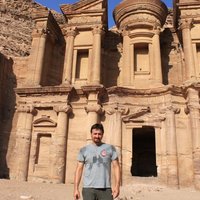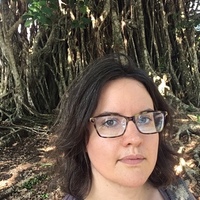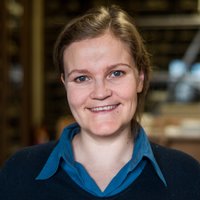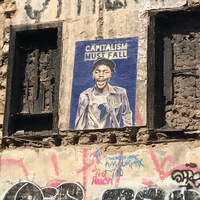Books by K. Patrick Fazioli
Since its invention by Renaissance humanists, the myth of the “Middle Ages” has held a uniquely i... more Since its invention by Renaissance humanists, the myth of the “Middle Ages” has held a uniquely important place in the Western historical imagination. Whether envisioned as an era of lost simplicity or a barbaric nightmare, the medieval past has always served as a mirror for modernity. This book gives an eye-opening account of the ways various political and intellectual projects—from nationalism to the discipline of anthropology—have appropriated the Middle Ages for their own ends. Deploying an interdisciplinary toolkit, author K. Patrick Fazioli grounds his analysis in contemporary struggles over power and identity in the Eastern Alps, while also considering the broader implications for scholarly research and public memory.
Articles and Book Chapters by K. Patrick Fazioli

The Transition from Late Antiquity to the Early Middle Ages in the Southeastern Alpine Region from the Perspective of Coarse Ware Ceramic Technology
Beiträge zur Mittelalter- und Neuzeitarchäologie in Österreich, 2024
This paper presents the results of microscopic analysis on 134 thin sections of coarse ware potte... more This paper presents the results of microscopic analysis on 134 thin sections of coarse ware pottery drawn from 24 late antique and early medieval sites (c. 300–900) in southeastern Austria and eastern and central Slovenia. Petrography was used to distinguish three primary fabric groups (carbonate-rich, gneiss-rich, and porous-bodied fabrics) as well as several subgroups in each category. The geographical and chronological distribution of these fabric types reveals a marked shift in ceramic traditions from Late Antiquity to the Early Middle Ages. While almost all late antique vessels were tempered with crushed carbonate materials, a preference for grog temper and gneiss-rich clays is evident in the 6th and early 7th centuries, especially at new settlements along the Mura, Sava, and Drava Rivers. Carbonate tempering appears to have continued into the Early Middle Ages but is shown only by distinctively shaped voids produced by the dissolution of calcite inclusions. The widespread emergence of highly porous fabrics across the region also signals other behavioral changes related to pottery manufacture or usage. These dramatic shifts in ceramic technological choice across the region at the onset of the Early Middle Ages may be explained by the arrival of new communities in this region and/or a decline in the sophistication of ceramic production after the collapse of the Western Roman Empire
Journal of the National Collegiate Honors Council, 2022
The long-term shift in undergraduate enrollment away from traditional humanities disciplines towa... more The long-term shift in undergraduate enrollment away from traditional humanities disciplines toward vocationally oriented majors poses a unique set of challenges for honors. While some have responded by emphasizing humanities' centrality to honors education, this essay argues the imperative that honors practitioners and administrators improve outreach efforts to preprofessional honors programs. After considering why fields outside the liberal arts and sciences are underrepresented in the National Collegiate Honors Council (NCHC), the author outlines a number of strategies for soliciting greater participation from academic leaders and faculty in these disciplines as well as improving the experience of careerfocused majors in liberal arts honors programs .
Archäologie in Österreich 1938–1945 Beiträge zum internationalen Symposium vom 27. bis 29. April 2015 am Universalmuseum Joanneum in Graz, 2020

Journal of the National Collegiate Honors Council, 2020
Patricia J. Smith's essay on the professionalization of honors advances several original and prov... more Patricia J. Smith's essay on the professionalization of honors advances several original and provocative arguments that deserve serious consideration. Although Smith makes a plausible case that honors has fulfilled at least three of The-odore Caplow's four stages of professionalization, a closer reading of this text reveals that the developments identified by Smith fail to satisfy the basic functions that each stage serves on the path toward professionalism. This essay argues that honors has little incentive to become a distinct profession because much of its highly skilled workforce enjoys the protection of occupational closure as college faculty and administrators. The author proposes an alternative sociological framework, inspired by the work of Pierre Bourdieu, for investigating past and present social dynamics of honors education. Key concepts of Bourdieu's theory of practice (field, illusio, doxa, and habitus) are defined and applied to the context of honors .

Pedagogy and the Human Sciences, 2016
Contemporary discussions of critical thinking lack serious consideration of students’ thinking-pr... more Contemporary discussions of critical thinking lack serious consideration of students’ thinking-processes as phenomena embedded within the contexts of psychological and interpersonal relationships. This paper departs from past and present approaches to critical thinking pedagogy by analogizing thinking and critical thinking with forms of relating: to self, to others, to objects of thought, and to what we describe as “thinking-relationships.” The analogy of thinking with relating permits us to examine more closely the connections between self, psyche, student, teacher, and learning institution, and to apply valuable insights from the fields of social philosophy and psychoanalytic theory to critical thinking pedagogy and practice. This paper introduces the metaphor of critical thinking as relating to one’s thinking-relationships, explores the contexts in which such critical thinking-relationships are embedded, identifies hidden desires, defenses, and fantasies that may hinder the development of critical thinking, and concludes by reflecting upon the link between the ethical development of the person and the ideal of critical thinking.

This chapter investigates the transformation of sacred landscapes from the Late Roman Empire to t... more This chapter investigates the transformation of sacred landscapes from the Late Roman Empire to the Early Middle Ages in the eastern Alpine-Adriatic region (c. AD 300-1000). While the shifting religious topography of this period has traditionally been seen through the totalizing lens of ‘Christianization’, recent scholarship has highlighted a range of methodological and conceptual limitations with this concept. Most critically, the mechanism that allowed Christianity to rapidly disseminate among the broader population remains under-theorized. This chapter identifies the syncretic blending of Christian and non-Christian beliefs and practices as an underappreciated factor in facilitating the spread of Christianity across Europe and the Mediterranean world in the first millennium AD. Support for this hypothesis is drawn from a range of historical and archaeological data that reveals the complex manner in which Christians appropriated Late Roman and Early Medieval sacred places, landscapes, and objects (spolia). Finally, evidence for the persistence of authentic pagan beliefs and rituals after the rise of Christianity in the late ancient, medieval, and modern eastern Alpine region is critically considered.

One of the most contentious debates in early medieval archaeology over the past decade concerns t... more One of the most contentious debates in early medieval archaeology over the past decade concerns the investigation of ethnicity in the material record. While the long dominant culture-history approach has been criticized for its significant theoretical and methodological limitations, there remains little agreement over what interpretive framework should replace it. This article offers an alternative approach that seeks to transcend the inherent analytical limitations with the concept of ‘ethnicity’ by focusing on the intersection of group identity, skilled practice, and technological choice. A study of coarse-ware pottery production in the southeastern Alps during the transition from Late Antiquity to the Early Middle Ages provides an illustrative example of how archaeologists can investigate aspects of early medieval social identity without relying on ethnic categories derived from the written sources.
Medieval and Early Modern Land Use: A Case Study from Southeastern Austria
This paper presents an integrated multimethod approach to the prospection and reconstruction of m... more This paper presents an integrated multimethod approach to the prospection and reconstruction of medieval and early
modern rural landscapes in southeastern Austria (ca. 1100–1700 CE). Pedestrian surface collection, soil phosphorus
analysis, and targeted test excavation, along with place-name and field-shape data, were used to investigate patterns
of settlement, land use and landscape organization. The results from fieldwork revealed an inverse relationship between
surface ceramic densities and soil phosphate levels, suggesting different areas of rubbish disposal, habitation and
agricultural practices. This case study illustrates both the benefits and challenges of synthesizing archaeological,
geochemical and historical lines of evidence in the exploration of past human landscapes in central Europe.

The Erasure of the Middle Ages from Anthropology's Intellectual Genealogy
History and Anthropology
This essay explores the curious absence of Middle Ages from the history of anthropological though... more This essay explores the curious absence of Middle Ages from the history of anthropological thought. An investigation of disciplinary histories reveals while anthropology's intellectual origins are often traced to early modernity or classical antiquity, the existence of authentic anthropological inquiry in medieval Europe has been either disregarded or explicitly denied. This historical lacuna is the product of an unexamined temporal logic that presupposes an epistemological rupture between the medieval and modern worlds. This essay challenges several historical myths that have underwritten the erasure of the discipline's medieval legacies, and then outlines the necessity of reintegrating the Middle Ages in anthropology's intellectual genealogy not only for enriching our understanding of pre-professional anthropology, but also for constructing a more holistic and inclusive understanding of the anthropological project.
From First Reich to Third Reich: German Imperialism and Early Medieval Scholarship in the Southeastern Alpine Region (c. 1919–1945)
This article explores how the early medieval past was used to justify Germanic political and cult... more This article explores how the early medieval past was used to justify Germanic political and cultural hegemony across East Central Europe during the first half of the 20th century. It highlights the ways in which medieval historians and archaeologists contributed to, and were influenced by, the program of “Ostforschung” (Eastern Research). A close reading of the work of two prominent German archaeologists during the interwar and National Socialist periods suggests that their conception of the early medieval eastern Alps was not only influenced by national chauvinism, but also reveals striking parallels with Western imperial ideologies typical of overseas colonial contexts.

CHRONIKA I CHRONIKA I
This report summarizes the results of archaeological, geochemical, and historical research in the... more This report summarizes the results of archaeological, geochemical, and historical research in the reconstruction of past landscapes in a small region of southeastern Austria. During field seasons in 2009 and 2010, the author coordinated pedestrian surface collection, soil phosphate survey, and targeted test excavations over c. 4 km2 area along the Middle Mura river valley in order to identify changes in past settlement and land use from prehistory through historic periods. Diagnostic ceramic materials provide the chronological context for examining the evolution of the human landscape over the past three thousand years and phosphate analysis provides further evidence of long-term land use and field systems. Results indicate a possible correlation between prehistoric and post-medieval use of space, with significant settlement and land use expansion beginning in the 15th century C.E. Overall, the survey was able to effectively trace changes in past human activities beyond what was known through previous excavations of individual sites.
Dissertation by K. Patrick Fazioli
Book Reviews by K. Patrick Fazioli
Review of Germany's Ancient Pasts: Archaeology and Historical Interpretation since 1700 (Brent Maner, 2018)
American Historical Review, 2020
Review of Shifting Ethnic Identities in Spain and Gaul, 500-700: From Romans to Goths and Franks (Erica Buchberger, 2017)
Review of The Making of Medieval History (Graham Loud and Marshall Straub, 2017)
Francia-Recensio, 2018
Review of The Invisible Slavs: Župa Bled in the “Prehistoric” Early Middle Ages (Andrej Pleterski, 2013)
Review of Mudane Objects: Materiality and Non-Verbal Communication (Pierre Lemonnier, 2012)











Uploads
Books by K. Patrick Fazioli
Articles and Book Chapters by K. Patrick Fazioli
modern rural landscapes in southeastern Austria (ca. 1100–1700 CE). Pedestrian surface collection, soil phosphorus
analysis, and targeted test excavation, along with place-name and field-shape data, were used to investigate patterns
of settlement, land use and landscape organization. The results from fieldwork revealed an inverse relationship between
surface ceramic densities and soil phosphate levels, suggesting different areas of rubbish disposal, habitation and
agricultural practices. This case study illustrates both the benefits and challenges of synthesizing archaeological,
geochemical and historical lines of evidence in the exploration of past human landscapes in central Europe.
Dissertation by K. Patrick Fazioli
Book Reviews by K. Patrick Fazioli
modern rural landscapes in southeastern Austria (ca. 1100–1700 CE). Pedestrian surface collection, soil phosphorus
analysis, and targeted test excavation, along with place-name and field-shape data, were used to investigate patterns
of settlement, land use and landscape organization. The results from fieldwork revealed an inverse relationship between
surface ceramic densities and soil phosphate levels, suggesting different areas of rubbish disposal, habitation and
agricultural practices. This case study illustrates both the benefits and challenges of synthesizing archaeological,
geochemical and historical lines of evidence in the exploration of past human landscapes in central Europe.
A close reading of historical and archaeological scholarship raises a number of important questions concerning the impact of these post-Cold War developments on the historical imagination of Slovenians, Austrians, and Italians: how have the Early Middle Ages been differently constructed by various ethno-nationalist groups in the region? In what manner has the medieval past been used to justify emergent political, social, and academic agendas? How has archaeological work become entangled in political disputes along this contested border? Debates surrounding the sixth-century Slavic settlement of the southeastern Alps, the mysterious seventh-century polity known as Carantania, and the recent rise of the so-called “Venetic Theory” will be highlighted in pursuing these questions. The central thesis is that narratives of the early medieval past continually serve the ever-changing cultural and psychological needs of the present.
This paper will survey some of the most interesting and innovative recent contributions of pottery studies to our knowledge of late antique and early medieval Central Europe (circa fifth to tenth centuries CE). Since an exhaustive review of the many national traditions across this culturally and linguistically diverse region is beyond the scope of this paper, the focus will remain on three broad areas of inquiry. First, what insights can pottery offer into changing patterns of exchange and networks of trade in the late antique and early medieval world? Second, what can pottery reveal about localized and regional modes of production, especially in terms of manufacturing traditions and technological style? Third, what (if anything) can pottery tell us about the expression of individual and collective identities in the post-Roman era? For each of these three themes, we will review how research agendas have evolved over the past several decades, identify key intellectual debates in the contemporary scholarship, and consider the promises and challenges of future research.
This paper contributes to the growing body of literature on the Late Antique – Early Medieval transition (c. 5th – 9th centuries AD) through an investigation of ceramic technological traditions. As ethnographic research has thoroughly demonstrated, potters are presented with a range of choices at each step of ceramic manufacturing process; environmental milieu, techno-functional parameters, socio-cultural traditions, and individual preference all contribute to the decision-making process.
In order to investigate aspects of these technological choices made during ceramic production—obtaining raw materials, paste preparation, forming the vessel, and firing conditions—macroscopic and microscopic analyses were conducted on local, coarse-ware ceramic samples drawn from a number of settlements throughout the region. By comparing and contrasting these ceramic fabrics types over time and space, this research begins to address complex issues of cultural memory, ethnic interaction, and social identity during this important but enigmatic period of Central European history.
"
This paper attempts to shed some light on this period by presenting the results of petrographic analyses on coarse-ware ceramics from several important sites in this region. Ceramic petrography, the mineralogical characterization of ceramic fabrics with optical microscopy, can indicate choices made in production sequences, providing important information not evident in stylistic analyses. This paper examines issues of technological continuity and change by comparing the mineral composition of these local, coarse-ware materials over time and space. This dataset also addresses more complicated questions of cultural interaction and social identity during this tumultuous but important period of Central European history.